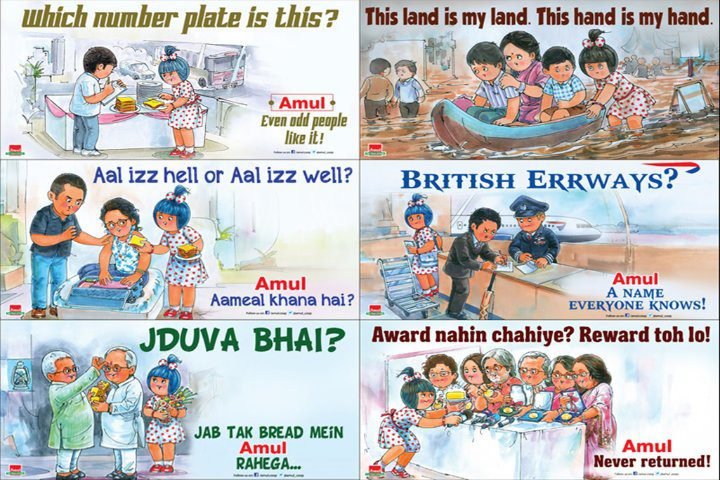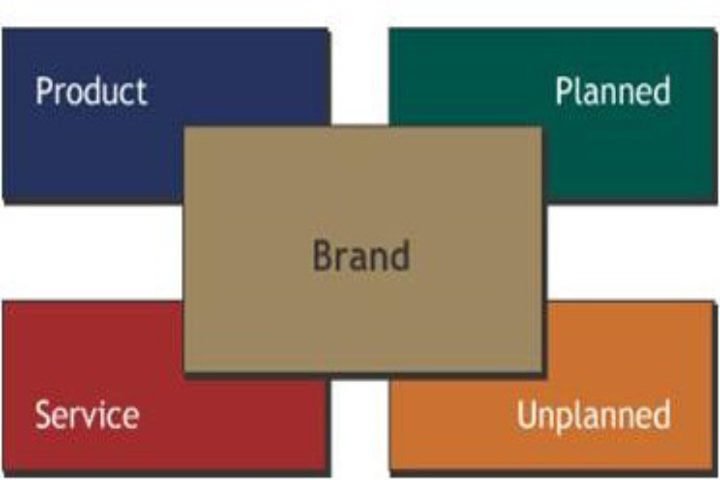In today’s competitive business environment, a business’s capability to communicate its brand effectively is essential to its success. It includes every activity and interaction that shapes customers’ perceptions of a brand.
In This Article
What is Brand Communication?
Brand communication is the combination of activities that influence customer’s opinions about a company and its products. Brand communication occurs every time a customer interacts with the brand.
- When customers see a logo
- View brand on supermarket shelves
- View brand content (social media, advertising, reviews)
- Meet a brand in person (when visiting the showroom)
Customer perceptions and opinions about a company and its products are shaped by a series of interactions that collectively form brand communication. Every time a customer or potential customer interacts with the brand, a conversation takes place continuously.
Therefore, it is very important to ensure that every ‘brand meeting’ builds the brand.
The following are the four key components of brand communication:
Visual Identity


It begins with the first appearance of a brand’s visual elements, such as its logo. For example, the iconic ‘M’ of McDonald’s instantly brings to mind memories of the best burgers and fries.
Physical Presence


This includes finding the brand on supermarket shelves, showrooms, or any physical space. A feeling of luxury and exclusivity defines the atmosphere and experience of a Nexa showroom.
Content Engagement


Brand communication in the digital age includes social media presence, advertising, reviews, and more. For instance, the “Dar Ke Aage Jeet Hai” campaign by Mountain Dew engages its audience through thrilling content and challenges.
Personal Interaction


Having an in-person interaction with a brand, particularly in showrooms or customer service settings, can create a lasting impression. When you walk into an Apple Store, the ambiance and experience convey a sense of sophistication and exclusivity.
Brand communication forms a unique connection in the hearts and minds of customers through these accumulated experiences. This relationship is strengthened by every brand interaction, so it is critical for businesses to make sure that every “brand meeting” strengthens the brand’s identity.
Media Channels and Brand Contact Points
Any person, event, or thing that provides exposure to a brand is considered as a medium. Every brand-related interaction that a customer or a potential customer has with a brand is referred to as a brand contact point.
To craft a successful brand communication strategy, it’s essential to understand the diverse media channels and brand contact points available. Let’s explore these touchpoints:
Media Channels
These are the platforms through which a brand communicates with its audience. Traditional channels include television, print media, and billboards, while digital channels include websites, social media, and email marketing.
Brands like Amul have effectively utilized print media for decades, becoming household names with their witty and relatable advertisements.


Brand Contact Points
These are the various interactions customers or potential customers have with a brand. They can be categorized into four main types:
Company-Created Touch Points
These are planned marketing communication messages, such as advertisements, news releases, brochures, and more.
For instance, a homegrown Indian brand, Lava, established in 2009, ranked the most trustworthy brand in the CMR Retail Sentiment Index 2018. Lava capitalized on their brand strengths, which are product and service quality, sales and distribution network, reliability and seamless consumer experience, be it software or hardware, and at every brand touch point.
Lava engaged Mahendra Singh Dhoni as their brand ambassador and through the #ProudlyIndian campaign, they shared the pride of being a truly Indian company.

Customer-Initiated Touch Points
These happen when a client or potential client gets in touch with a business. It might be questions, grievances, or comments. As demonstrated by Amazon India, prompt and friendly customer service may make a good first impression.
Intrinsic Touch Points
Intrinsic means being an extremely important and basic characteristic of a person or thing. In this case, intrinsic interactions are crucial during the purchasing or using process.
Interactions with customer service, for instance, are essential touchpoints. One such example is Nexa’s focus on providing a premium, hassle-free car-buying experience.
Unexpected Touch Points
Sometimes, references to a brand occur unexpectedly, driven by dissatisfied customers, media coverage, or other sources. Managing unexpected touchpoints is a challenge, and effective crisis management is crucial in such cases.


For instance, how Maggi managed its image and reputation after a crisis related to product safety concerns is a noteworthy example.
The Need for Brand Communication
Effective brand communication is crucial, and this cannot be emphasized enough. It accomplishes several goals:
Creating Impact
A strong brand communication strategy can drive significant impact, as seen in Tata Tea’s “Jaago Re” campaign. This initiative aimed to awaken social consciousness and garnered widespread attention.

Building an Engaging Experience
Brands like Nexa focus on creating an engaging and positive customer experience. Their showrooms are not just places to buy cars but spaces that offer a unique and memorable experience.
Influencing Behavior
Mountain Dew’s “Dar Ke Aage Jeet Hai” campaign is a prime example of how brand communication can influence consumer behavior. It encourages consumers to step out of their comfort zones and take risks.
High Returns on Investment
Brand communication, when done right, can offer high returns on investment. Vodafone’s Zoo Zoo campaign created such a buzz that it became a cultural phenomenon.
Brand Communication Essentials
To effectively carry out brand communication, a brand needs to have a clear brand image strategy in place. The brand image is essentially the current perception of the brand held by its customers.
It can be defined as a unique bundle of associations within the minds of target customers. It signifies what the brand currently stands for. It is a set of beliefs held about a specific brand.
Alignment with Brand Image
Brand communication is a reflection of brand image strategy. It should align with and reinforce the brand’s existing image. For example, the environmental consciousness associated with Bisleri’s brand image is reflected in their communication about eco-friendly packaging.
Product Differentiation
One of the key functions of brand communication is to differentiate products by enhancing their value beyond their functional attributes. For instance, Bisleri is one of the largest sellers of bottled water in India, not necessarily because it’s the best product but because it has successfully differentiated itself through a unique brand proposition focused on purity and trust.
Creating Preferences
Effective brand communication helps build preferences for a brand over competing products. This, in turn, leads to the creation of a long-term, sustainable competitive advantage. For instance, Amul has carved a niche for itself in the dairy industry by consistently delivering quality and a strong sense of familiarity through its advertising.
Brand Communication Process
A Sticky Interface
For businesses, the term “interface” refers to the ease with which customers and other stakeholders can communicate with the company. It’s the point where the brand and its customers connect.
A sticky interface signifies a strong and loyal relationship between the brand and its customers. In other words, customers are inclined to stick with the brand because they find it easy, enjoyable, and beneficial to engage with it. Brands that manage to create a sticky interface enjoy enhanced customer loyalty and advocacy.


Planned Messages
Planned messages are a fundamental aspect of brand communication. These messages are intentionally crafted and delivered through various channels to convey specific information or ideas. Planned messages include:
- Advertising: Television, radio, print, digital, and out-of-home advertisements serve as powerful mediums for brand communication. Companies like Tata Motors leverage advertising campaigns to highlight the features and benefits of their vehicles.
- Sales Promotion: Special promotions, discounts, and limited-time offers are excellent tools for generating interest and driving sales. Brands like Big Bazaar regularly employ sales promotion tactics to attract customers.
- Personal Sales: Sales representatives play a critical role in delivering brand messages. Whether it’s a car salesperson explaining the features of a new model or a smartphone sales associate guiding a customer through the options, personal sales interactions are part of brand communication.
- Merchandising Materials: The way products are displayed in stores can impact consumer perceptions. Effective merchandising materials, such as well-designed point-of-sale displays, can influence purchase decisions.
- Press Releases: Companies issue press releases to communicate important updates, such as product launches, partnerships, or financial results. These releases are a controlled way of sharing brand-related information with the media and the public.
- Events: Hosting or participating in events is a strategic way to engage with the target audience. Whether it’s an auto expo where car manufacturers showcase their latest models, a technology conference, or launch day events by a mobile company where new gadgets are unveiled, these events provide opportunities for brand communication.
- Sponsorships: Brands often sponsor events, teams, or causes to gain exposure and connect with a specific demographic. For instance, Tata, through its IPL sponsorship, aims to reach cricket enthusiasts in India.
- Packaging: Product packaging serves as a direct point of contact with consumers. The design, information, and overall presentation of the packaging contribute to the brand’s message.
- Annual Reports: While not directly consumer-facing, annual reports provide a comprehensive overview of a company’s performance, goals, and strategies. These reports are important for investors and stakeholders and can influence their perception of the brand.
Traditional planned messages typically promote the brand or company and its objectives. They aim to convey key brand values, features, and benefits while also encouraging consumers to take action, such as making a purchase or engaging with the brand in some way.
Product Messages


In addition to planned messages, product messages are an integral part of brand communication. Product messages encompass all the information that a product conveys through its design, performance, pricing, and distribution. Each aspect of a product can communicate something to the consumer:
- Design: The design of a product can communicate its functionality, aesthetics, and quality. For example, the sleek and minimalist design of Apple products conveys a sense of sophistication and innovation.
- Performance: The way a product performs and meets customer expectations is a significant message. Brands like OnePlus focus on delivering high-performance smartphones, which is evident in their product messaging.
- Pricing: The pricing of a product communicates its positioning in the market. Luxury brands like Rolex use high pricing to convey exclusivity and quality.
- Distribution: The availability and accessibility of a product are also part of product messaging. Brands like Coca-Cola have widespread distribution, ensuring that their products are easily accessible to consumers.
Service Messages
Service messages come from interactions with service representatives, receptionists, secretaries, delivery personnel, and all other representatives of a company. These messages are a direct result of the quality of service provided and can significantly impact the brand’s image.
There are five key measures of service quality:
- Tangibles: The physical appearance of service facilities, equipment, personnel, and communication materials can influence service perceptions. Well-maintained service centers, neatly dressed staff, and professional communication materials send positive service messages.
- Reliability: Customers expect services to be consistently reliable and accurate. Brands that consistently meet or exceed their promises build trust with customers.
- Responsiveness: Timely responses to customer needs and inquiries are crucial. Brands that demonstrate quick responsiveness convey a commitment to customer satisfaction.
- Assurance: Competent and courteous employees can reassure customers that they are in capable hands. Training and development of staff play a significant role in assuring customers of the brand’s reliability.
- Empathy: The ability to understand and address customer needs and concerns with compassion and care is a critical service message. Empathetic interactions leave a lasting positive impression.
Unplanned Messages


While planned messages are carefully curated, unplanned messages are those that emerge without direct control from the brand. These messages can be both positive and negative and may include:
- Brand or Company-related News Stories: Media coverage can shape public perception. Positive news stories, like a company’s philanthropic efforts, can enhance the brand’s image, while negative stories, such as product recalls, can harm it.
- Gossip or Rumors: Word of mouth and rumors can spread quickly and influence how people perceive a brand. Brands need to monitor and address rumors to mitigate potential damage.
- Actions of Special Interest Groups: Brands can be impacted by the actions and statements of special interest groups or advocacy organizations. For example, brands in the fashion industry may face scrutiny from animal rights groups regarding the use of animal fur.
- Comments made by the Trade and Competitors: Competitors and industry experts may comment on a brand’s products or strategies, which can influence consumer perceptions. Brands must be vigilant and ready to respond to such commentary.
- Findings by Government or Research Institutions: Official findings, studies, or reports from government agencies or research institutions can carry significant weight and impact how a brand is perceived.
Brand communication is the art and science of crafting meaningful, consistent, and compelling messages to engage with customers, build trust, and create lasting connections. It encompasses planned and product messages, service quality, and managing unplanned messages. When done effectively, brand communication can lead to trust, loyalty, differentiation, and a strong value proposition.




